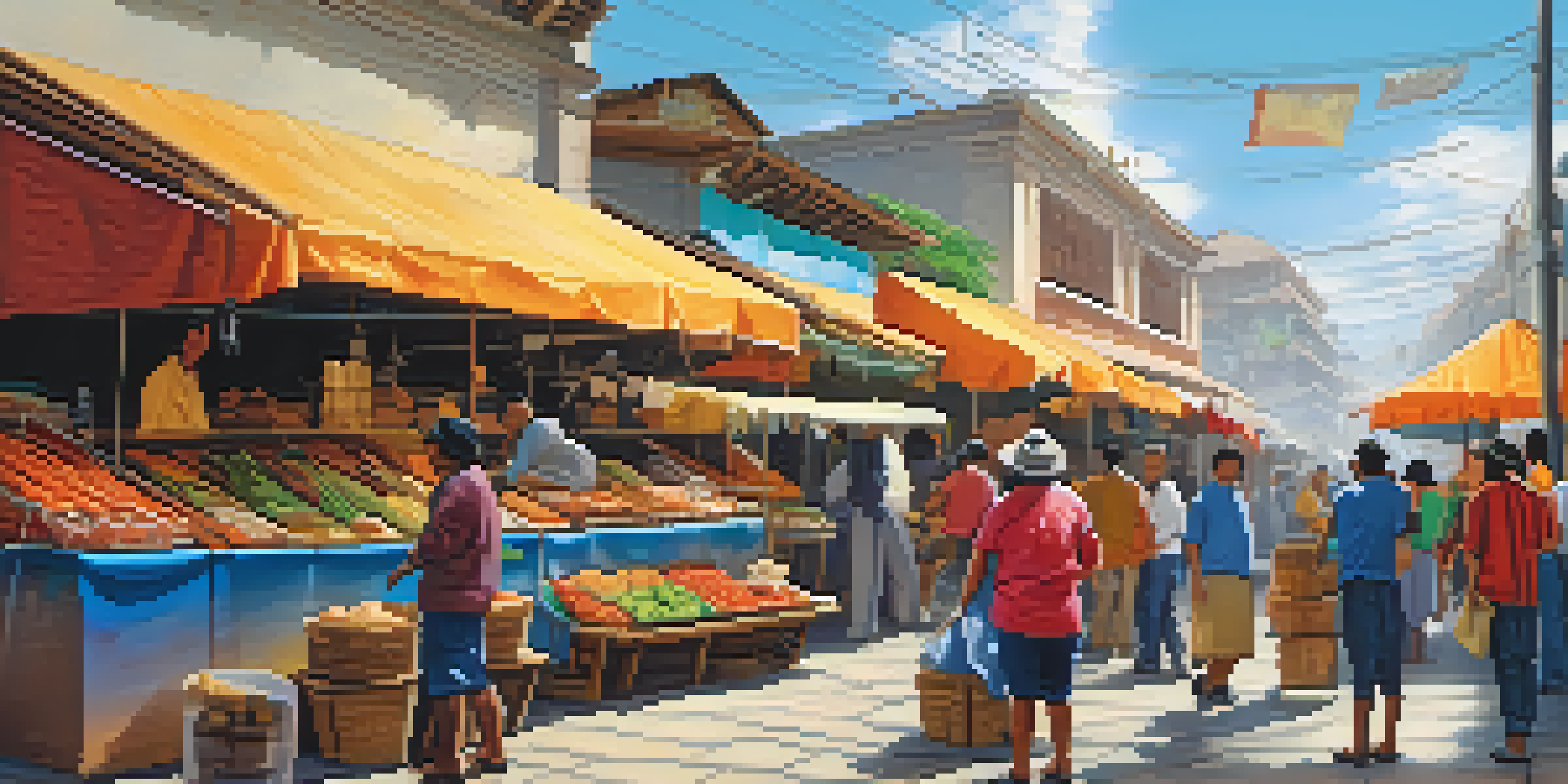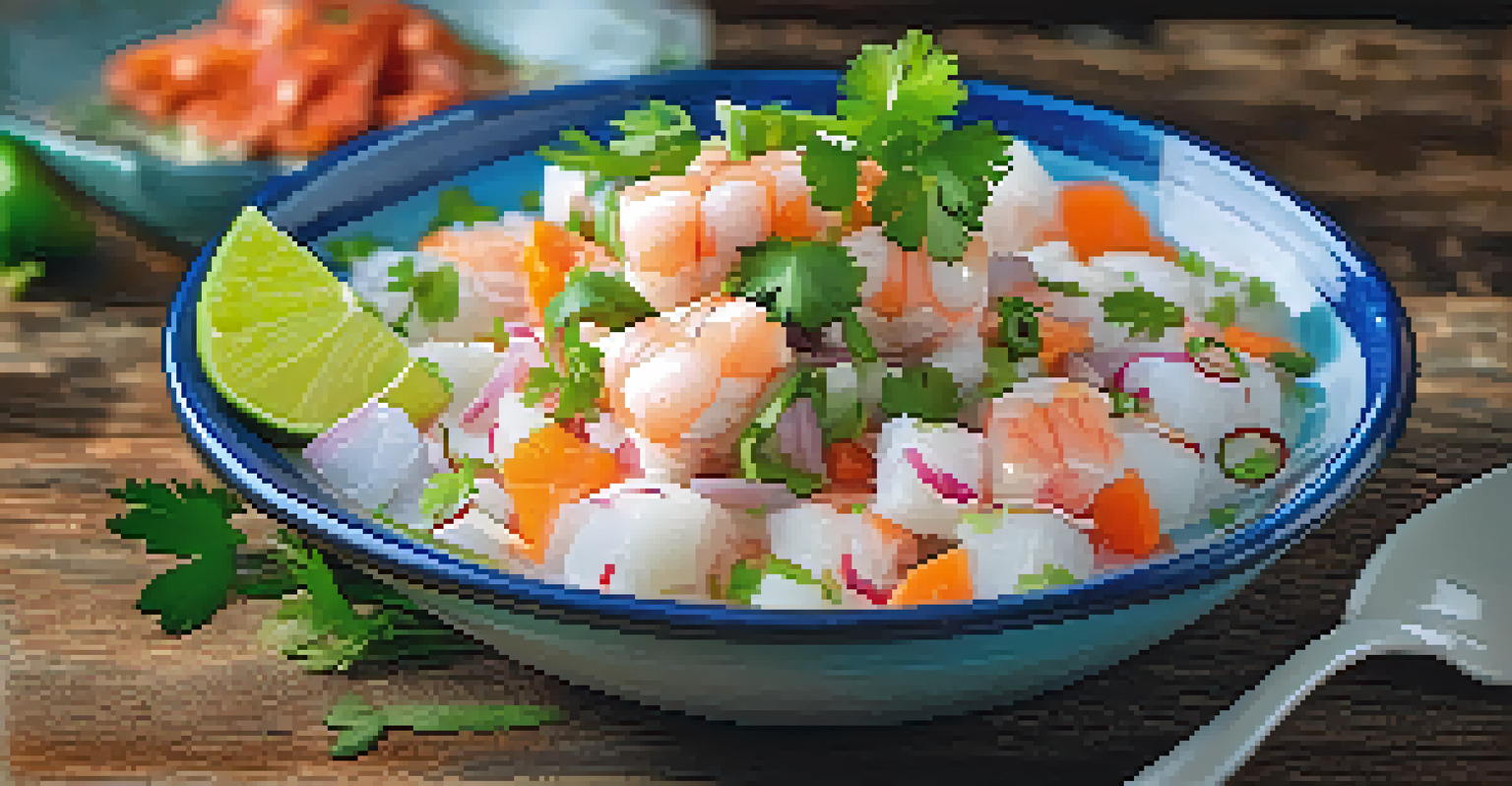Tips to Prevent Foodborne Illness While Traveling in Peru

Understand the Risks of Foodborne Illnesses Abroad
Traveling to a new country like Peru opens up a world of culinary delights, but it also comes with certain health risks. Foodborne illnesses can occur when consuming contaminated food or water, and travelers are particularly vulnerable. Understanding these risks is the first step to enjoying your journey without facing stomach issues.
Food safety is a shared responsibility. Everyone has a role to play, from food producers to consumers.
Common pathogens found in food can lead to gastrointestinal discomfort, which is something no traveler wants to experience. In Peru, the combination of street food, local ingredients, and unfamiliar cooking practices can heighten these risks. Being aware of these factors prepares you to make safer choices.
Recognizing the potential for foodborne illness helps you appreciate the importance of food safety. This awareness allows you to explore Peru's rich culinary landscape while keeping your health in check. Let’s dive into some practical tips to help you eat safely during your travels.
Choose Cooked Foods Over Raw Options
When dining out in Peru, it's wise to opt for cooked foods rather than raw dishes. Cooking food at high temperatures kills harmful bacteria and parasites that may be present. Dishes like ceviche, though delicious, are often made with raw fish, which can pose a risk if not prepared correctly.

Look for items that are freshly cooked and served hot. This not only reduces your risk of foodborne illness but also ensures you’re enjoying the freshest ingredients available. Plus, there’s something satisfying about savoring a warm, comforting meal after a day of exploration.
Prioritize Food Safety Abroad
Understanding the risks of foodborne illnesses is essential for enjoying safe culinary experiences while traveling.
Don’t hesitate to ask your server about how dishes are prepared. Understanding the cooking methods used can provide peace of mind, allowing you to indulge in Peru's vibrant cuisine without worry. Remember, a little caution goes a long way!
Be Cautious with Street Food Choices
Street food is a quintessential part of the Peruvian culinary experience, but it requires a discerning eye. While many vendors offer delicious and safe options, some may not adhere to food safety standards. Choosing reputable vendors can help mitigate the risks associated with street food.
The greatest risk is to risk nothing at all. In a world that is changing really quickly, the only strategy that is guaranteed to fail is not taking risks.
Look for stalls that have a high turnover of customers, as this often indicates freshness and popularity. Additionally, observe the vendor's hygiene practices—cleanliness is a good sign. If you see them using gloves or regularly cleaning their work area, that's a positive indicator.
Trust your instincts; if a vendor or food item feels questionable, it’s best to skip it. Exploring local flavors is exciting, but your health should always come first. With careful choices, you can enjoy the vibrant street food scene without compromising safety.
Drink Bottled Water or Boil Tap Water
In Peru, drinking tap water may not be the safest option, so it's crucial to choose your hydration wisely. Bottled water is widely available and is the safest choice for travelers. Look for sealed bottles to ensure you're getting clean water free from contaminants.
If bottled water isn't accessible, boiling tap water for at least one minute can kill harmful bacteria and pathogens. Just remember to let it cool before drinking! This method can be particularly useful if you're staying in an area where bottled water is scarce or if you're camping.
Choose Cooked Foods Wisely
Opting for freshly cooked meals over raw options can significantly reduce the risk of foodborne illnesses during your travels.
Staying hydrated is essential for enjoying your travels, so prioritize safe water choices. By being mindful of what you drink, you can prevent dehydration and safeguard your belly during your adventures through Peru.
Wash Your Hands Regularly
Hand hygiene is one of the simplest yet most effective ways to prevent foodborne illnesses. Regularly washing your hands, especially before meals and after using the restroom, is crucial. Carry hand sanitizer for times when soap and water are not readily available.
Before eating, take a moment to clean your hands thoroughly. This helps remove any germs that may have been picked up during your travels. It’s a small step that can significantly reduce your chances of getting sick while enjoying local delicacies.
Encouraging others in your travel group to practice good hand hygiene can create a healthier environment for everyone. By making this a habit, you’re not only protecting yourself but also contributing to the overall well-being of your companions.
Avoid Ice in Drinks Unless You're Sure of Its Source
While it might be tempting to enjoy a refreshing drink with ice, it's important to be cautious. Ice made from tap water can harbor harmful bacteria, leading to illness. To play it safe, ask for drinks without ice or ensure that the ice is made from bottled or purified water.
In many restaurants and bars, ice is often made from safe water, but it's always a good idea to double-check. This simple question can save you from potential discomfort later. Alternatively, opt for beverages that are served hot or at room temperature—these are less likely to pose a risk.
Stay Hydrated Safely
Drinking bottled water and avoiding ice from tap water are crucial steps to prevent potential health issues while exploring Peru.
By being mindful of your drink choices, you can enjoy Peru’s vibrant beverage scene without compromising your health. Staying informed and cautious is key to a joyful and illness-free trip.
Pack Your Own Snacks for the Journey
When traveling around Peru, packing your own snacks can be a smart way to control what you eat. Non-perishable items like nuts, granola bars, and dried fruits are great options. Having these snacks on hand can help you avoid questionable food choices when hunger strikes.
Not only do packed snacks provide you with a reliable option, but they can also save you money. Street food can be tempting, but having your own healthy snacks means you won’t be forced to eat something that might not be safe. It also allows you to explore more remote areas without worrying about food availability.

This preparation gives you peace of mind and helps you stay energized throughout your adventures. So, before you head out, take a moment to pack some delicious and safe snacks for the road!
Know What to Do If You Get Sick
Despite all precautions, sometimes illnesses can happen while traveling. If you start to experience symptoms like nausea, vomiting, or diarrhea, it’s important to know how to respond. Stay hydrated by drinking plenty of fluids, preferably an oral rehydration solution if available.
Seek medical attention if symptoms persist or worsen. Many cities in Peru have clinics and hospitals that can provide the necessary care. It's always good practice to have travel insurance that covers medical expenses, so you can get help without added stress.
Staying informed about local health resources can enhance your peace of mind. While we hope for the best on our travels, being prepared for the unexpected ensures that you can focus on enjoying the beauty of Peru.